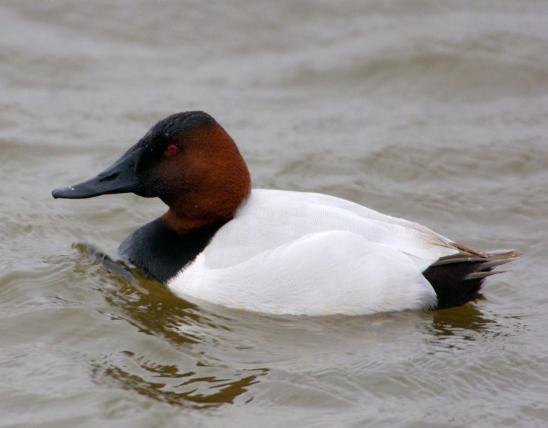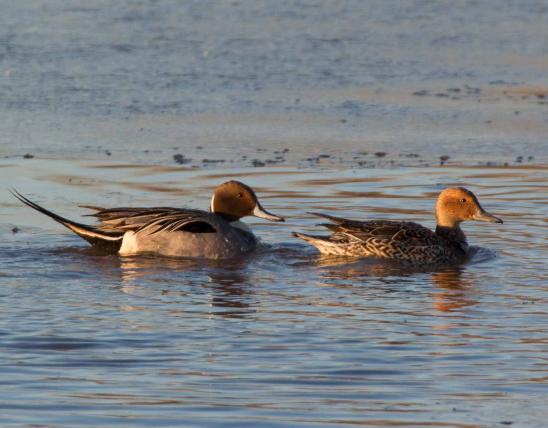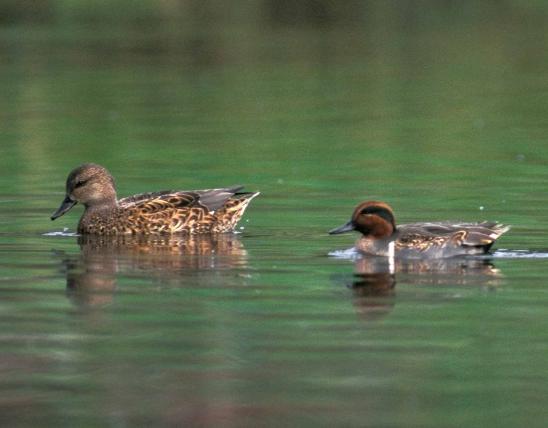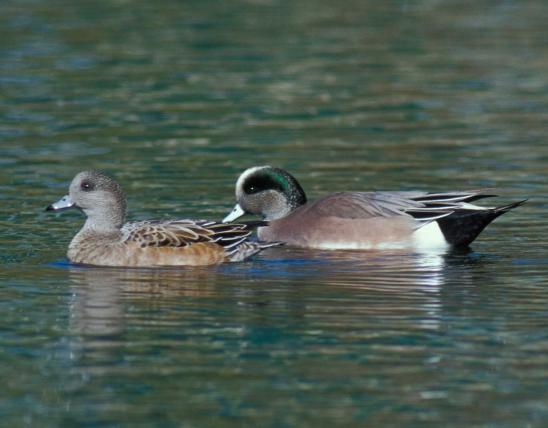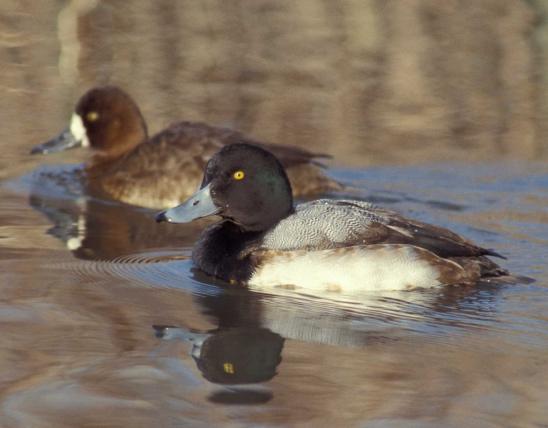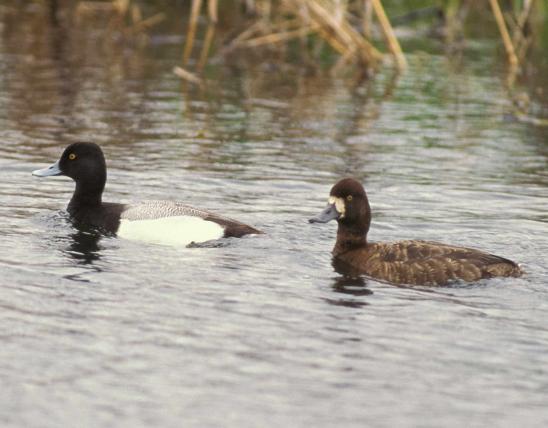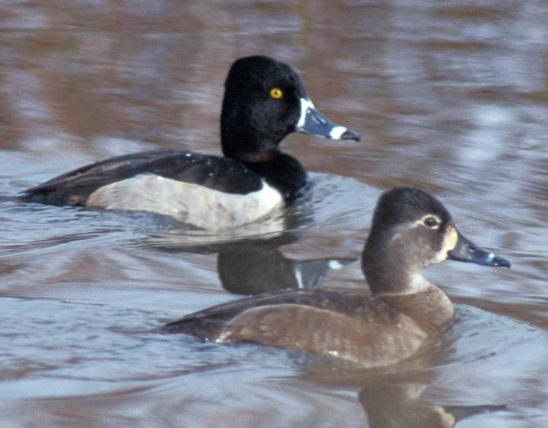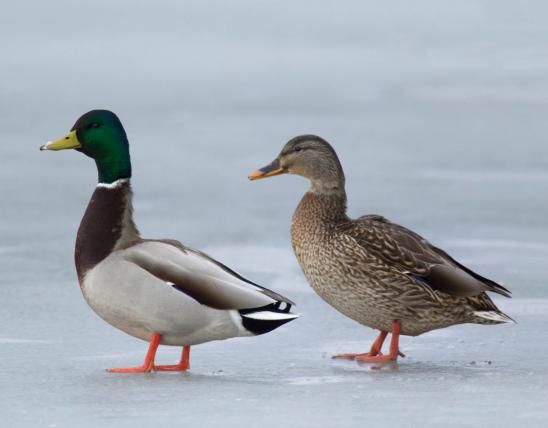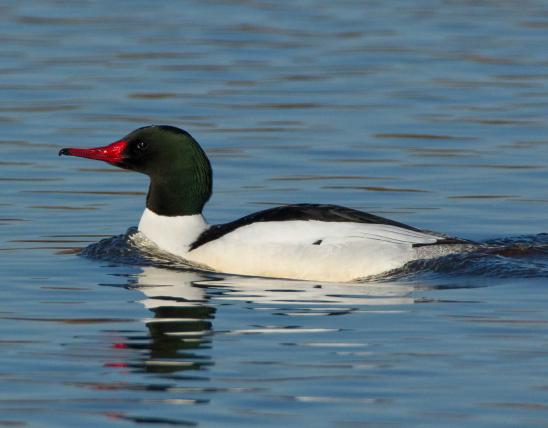
The adult male redhead has a chestnut-red head, black breast and rear end, and gray body and wing stripes. The bill is blue with a black tip. The female is brown with a darker back, a black-tipped blue bill, a gray wing stripe, and a buffy eye ring and face. The female voice is a soft greb, the male’s is loud, nasal waoh.
A member of a group of ducks called pochards, diving ducks, or bay ducks, redheads dive completely underwater to forage. Compared to dabbling or dipping ducks, they have smaller wings relative to their body weight, so they must work harder to take off from the water surface. To take flight, they must run along the surface of the water, patting their feet on the surface, to gain speed and lift until they are airborne. The feet are located farther back on their bodies than on dabblers, making them sit more upright when on land.
Similar species: The male canvasback has a white body (not gray), and its long bill is blackish. It has a sloping head and bill and is larger.
Length: 19 inches (tip of bill to tip of tail).
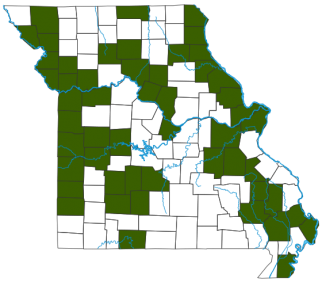
Statewide.
Habitat and Conservation
Redheads dive to forage on aquatic vegetation and invertebrates in marshes, sloughs, ponds, lakes, reservoirs, and streams with abundant submerged aquatic vegetation and open (ice-free) water. They often occur in mixed-species flocks of other bay or diving ducks, including lesser scaup, ring-necked ducks, and canvasbacks.
Food
Like other diving ducks, redheads dive completely underwater to forage, but they can forage by dabbling when necessary. Foods include roots, shoots, and other parts of aquatic plants, and some small aquatic animals, especially snails and clams.
Status
Uncommon migrant. Not known to breed in the state, although rarely observed in summer. Rare but reported statewide in winter in small groups.
Life Cycle
Like many other migratory waterfowl, redheads are usually seen in Missouri as they fly through in spring and fall between their northern breeding grounds and their overwintering territory in western North America. Interestingly, redheads often lay eggs in the nests of other redheads as well as of other ducks. This nest parasitism makes them something like cowbirds. However, unlike cowbirds, which only lay eggs in other birds’ nests, the parasitically laid eggs of redheads rarely hatch.
Human Connections
As with other migratory waterfowl, redhead numbers are tracked and game laws structured to keep populations healthy. People hunt ducks for the challenge, the meat, and simply to be outdoors doing something humans have done for ages.
Ecosystem Connections
Animals that migrate play important ecological roles in both breeding and overwintering territories. They also influence the ecology of every region they travel through in spring and fall.
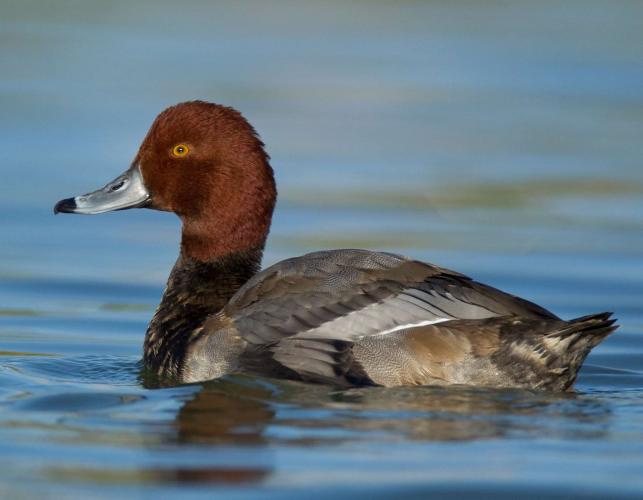
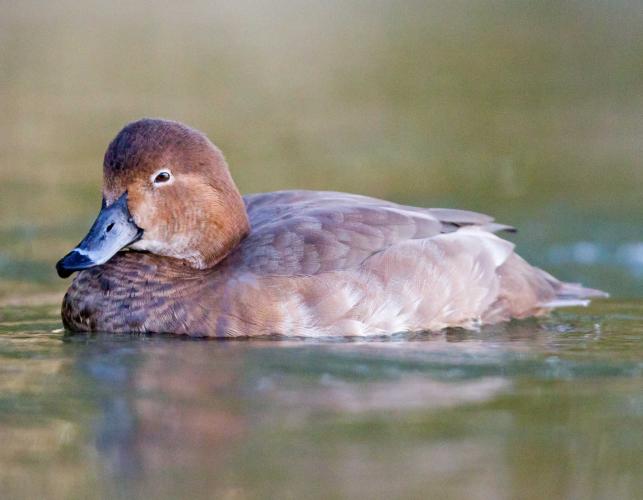
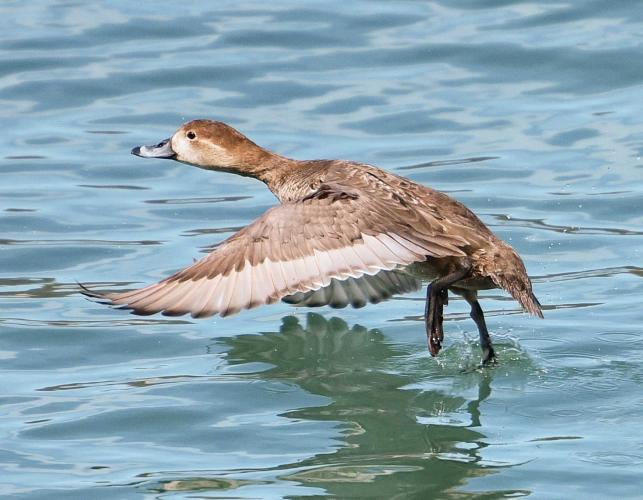
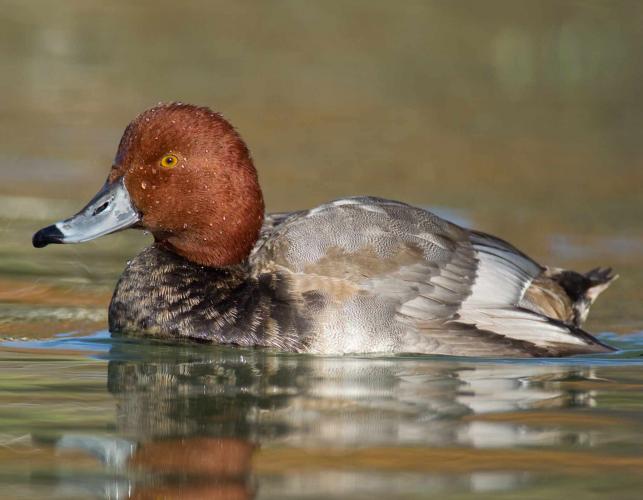
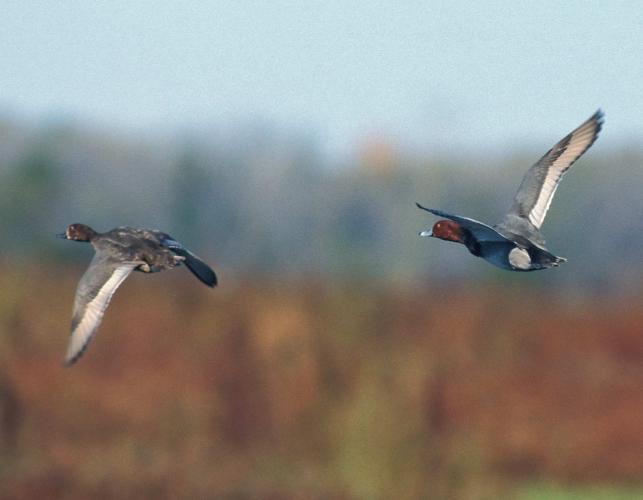
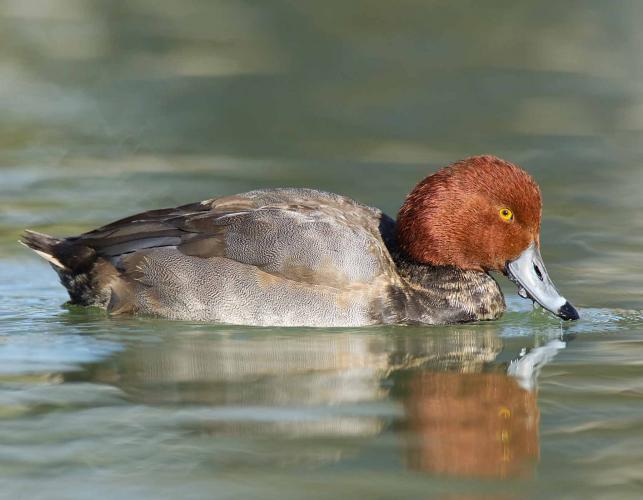
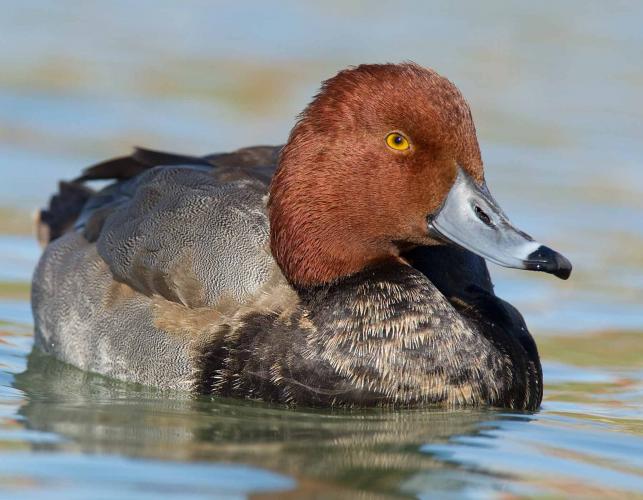
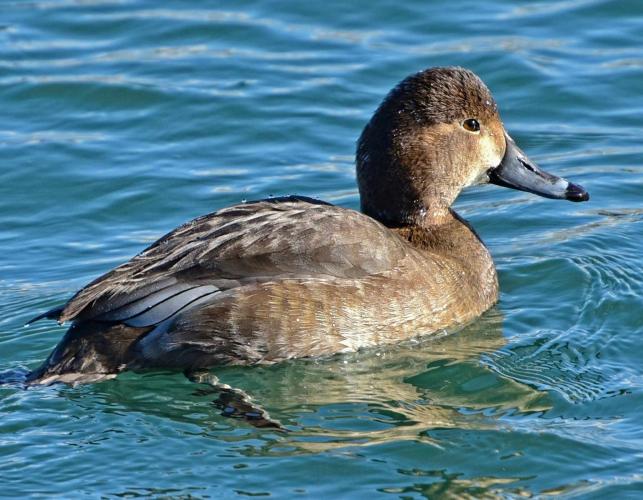
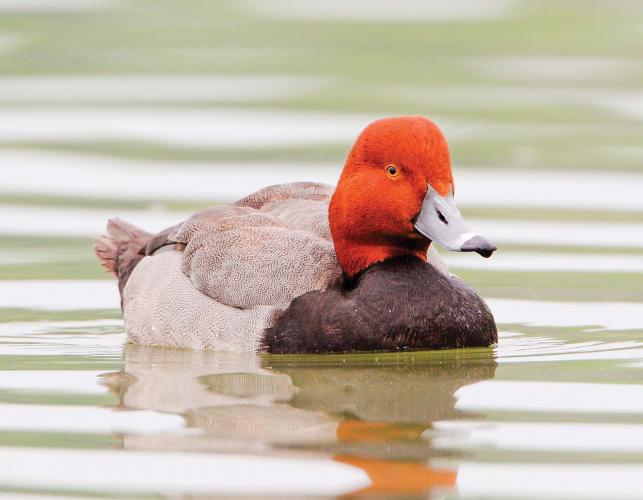


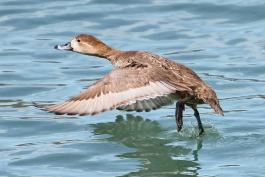

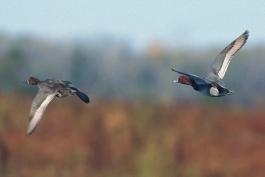
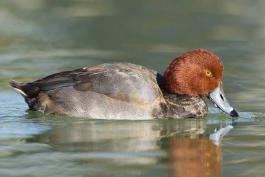
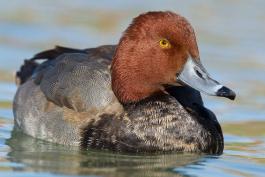

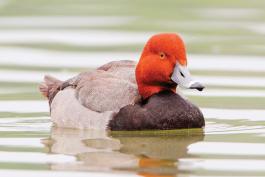
About 350 species of birds are likely to be seen in Missouri, though nearly 400 have been recorded within our borders. Most people know a bird when they see one — it has feathers, wings, and a bill. Birds are warm-blooded, and most species can fly. Many migrate hundreds or thousands of miles. Birds lay hard-shelled eggs (often in a nest), and the parents care for the young. Many communicate with songs and calls.






















